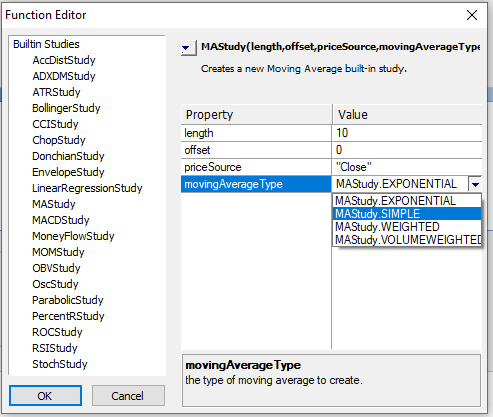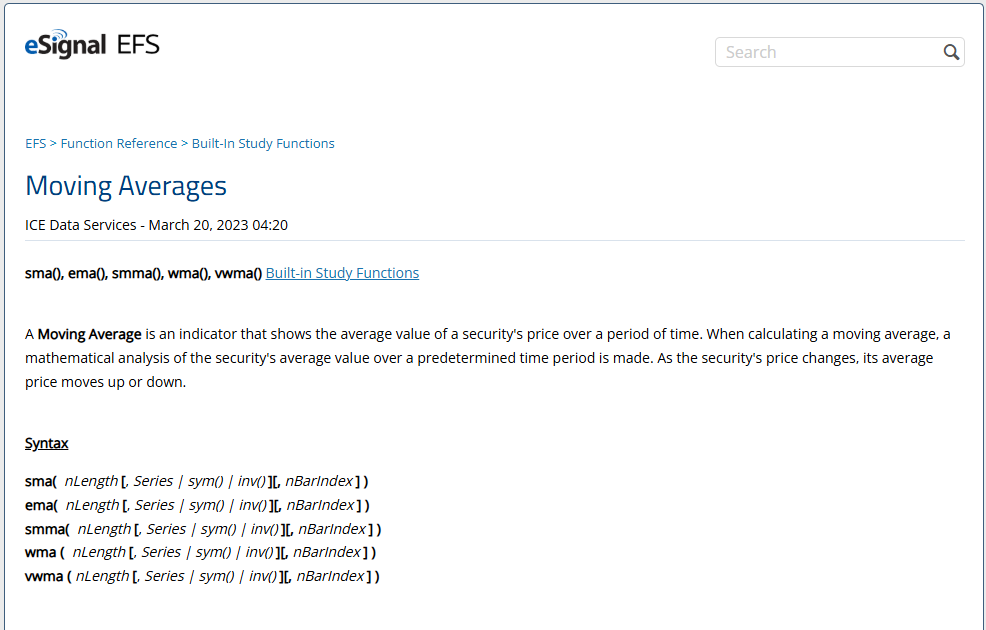Hi
I've just started learning EFS (though I'm an experienced developer) and I have some questions about developing indicators.
1. In the Knowledge Base article "Guide to Developing EFS Indicators", the examples use a class called MAStudy to create the moving averages, but this doesn't seem to be documented anywhere and appears to have been superseded by the sma(), ema(), wma() etc functions. Are object-oriented versions of other studies also available, and are they still supported?
2. Although it seems clear that the main() function is called for every price bar, the MAStudy class is being instantiated every time. Is this a mistake? Would it even work as expected?
3. The examples in this article each return either a single or an array of numeric values, but I've seen other examples that return either a single or an array of Series objects. Please can you explain when it is necessary to use Series objects and when it is acceptable to just return numeric values?
4. I have a large library of Javascript classes that were originally written for Sharescope, but which I'd like to use in eSignal. My plan is to leave the library classes in their existing, generic format, and create a series of procedural wrapper functions to provide an eSignal-style interface. Do you have any examples of how best to do this?
Thanks
Marcus
I've just started learning EFS (though I'm an experienced developer) and I have some questions about developing indicators.
1. In the Knowledge Base article "Guide to Developing EFS Indicators", the examples use a class called MAStudy to create the moving averages, but this doesn't seem to be documented anywhere and appears to have been superseded by the sma(), ema(), wma() etc functions. Are object-oriented versions of other studies also available, and are they still supported?
2. Although it seems clear that the main() function is called for every price bar, the MAStudy class is being instantiated every time. Is this a mistake? Would it even work as expected?
3. The examples in this article each return either a single or an array of numeric values, but I've seen other examples that return either a single or an array of Series objects. Please can you explain when it is necessary to use Series objects and when it is acceptable to just return numeric values?
4. I have a large library of Javascript classes that were originally written for Sharescope, but which I'd like to use in eSignal. My plan is to leave the library classes in their existing, generic format, and create a series of procedural wrapper functions to provide an eSignal-style interface. Do you have any examples of how best to do this?
Thanks
Marcus


Comment